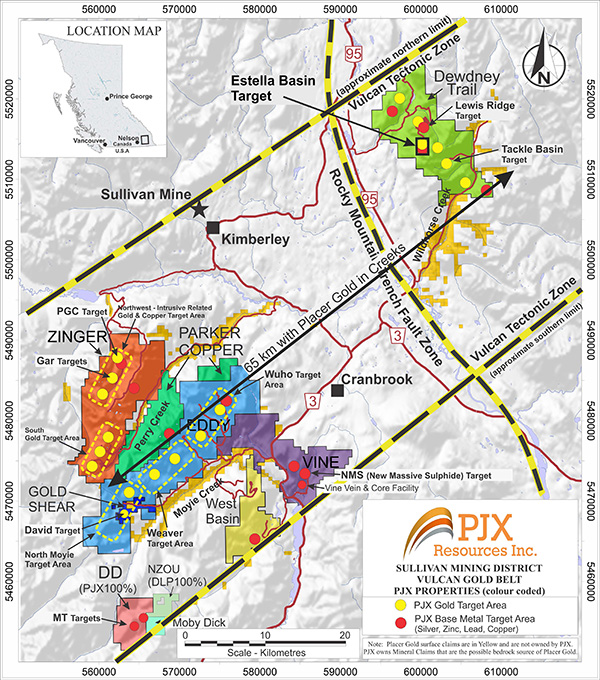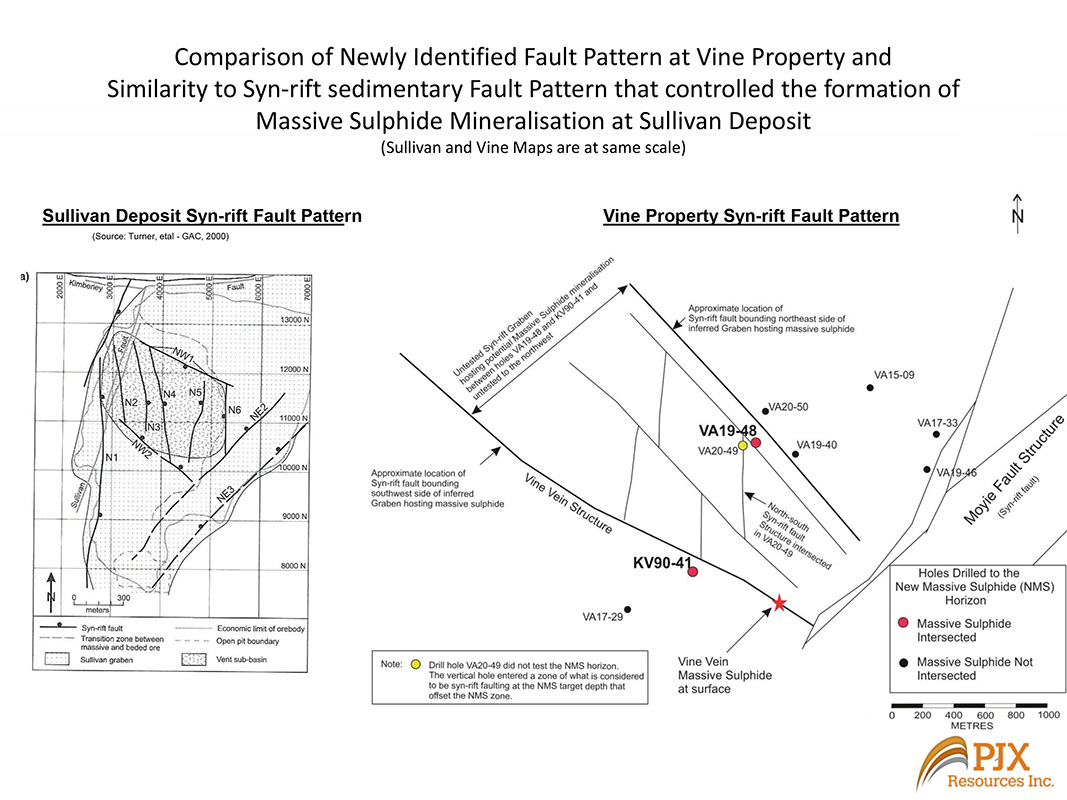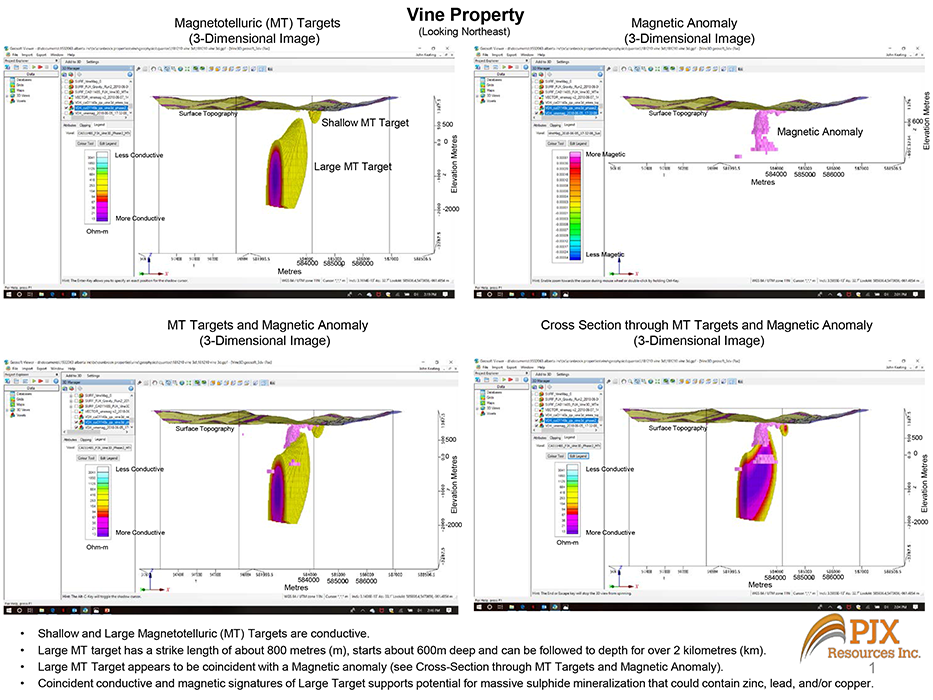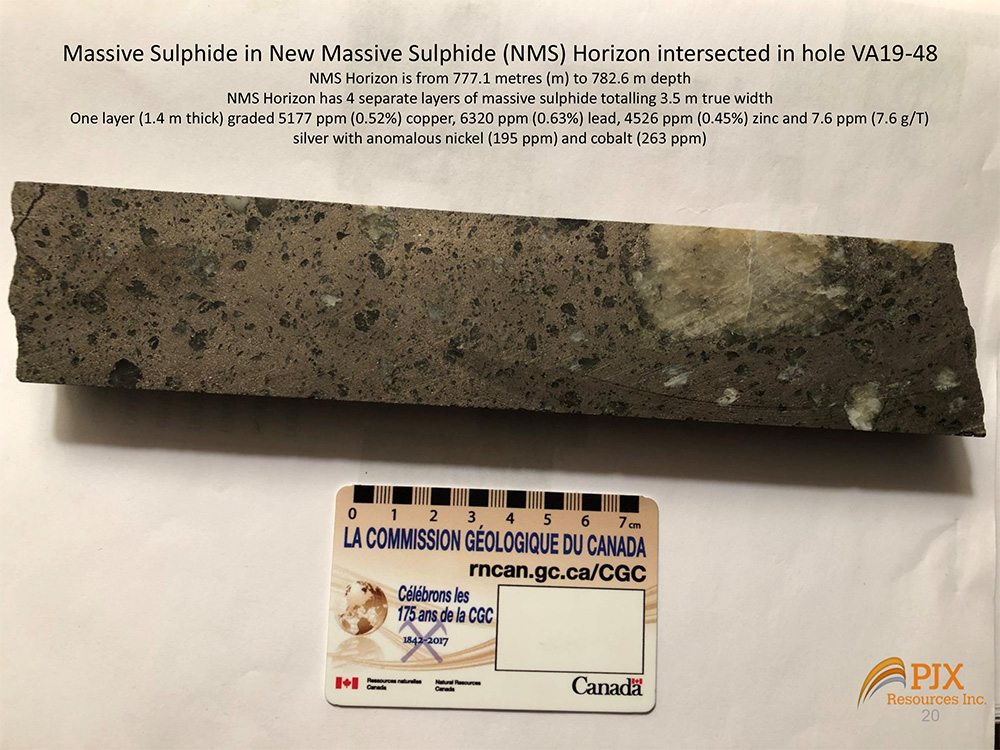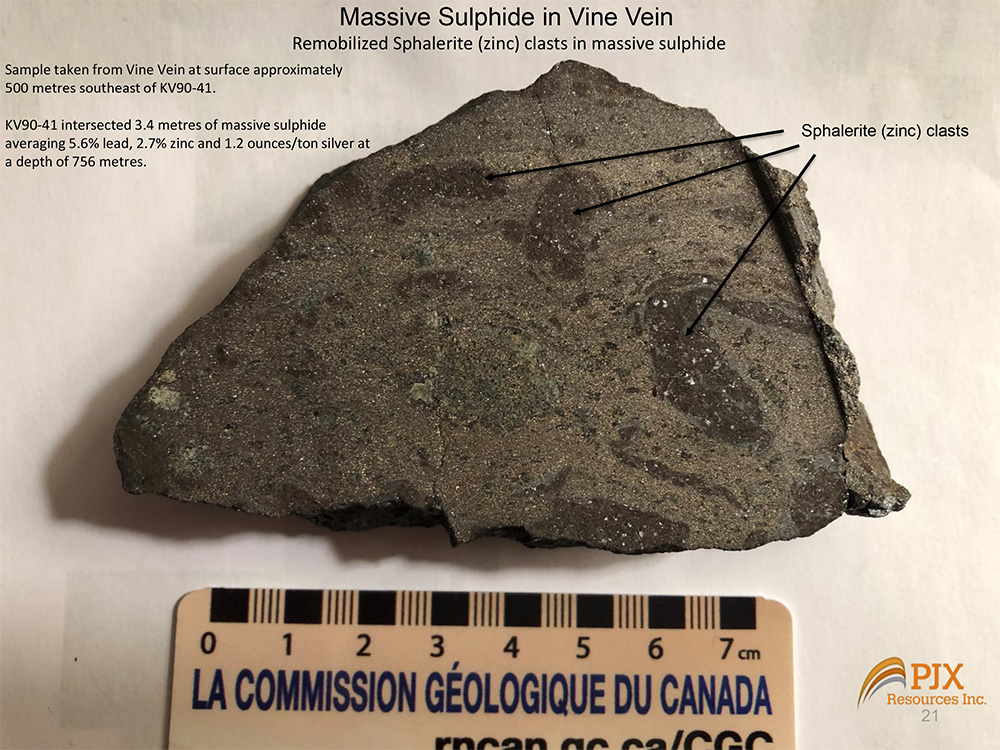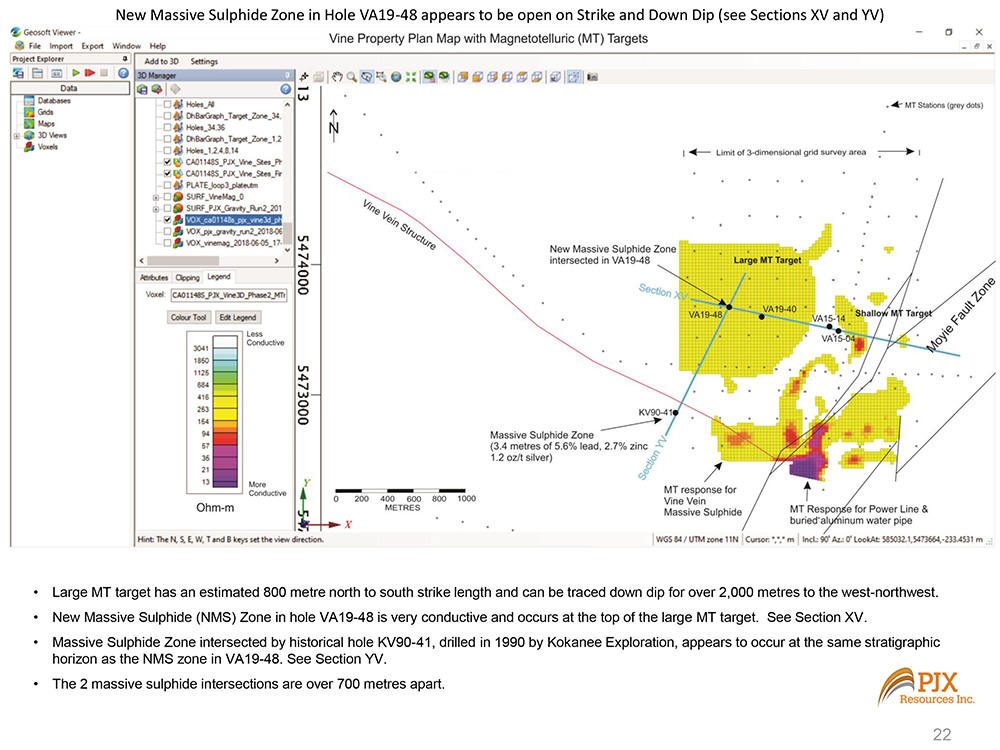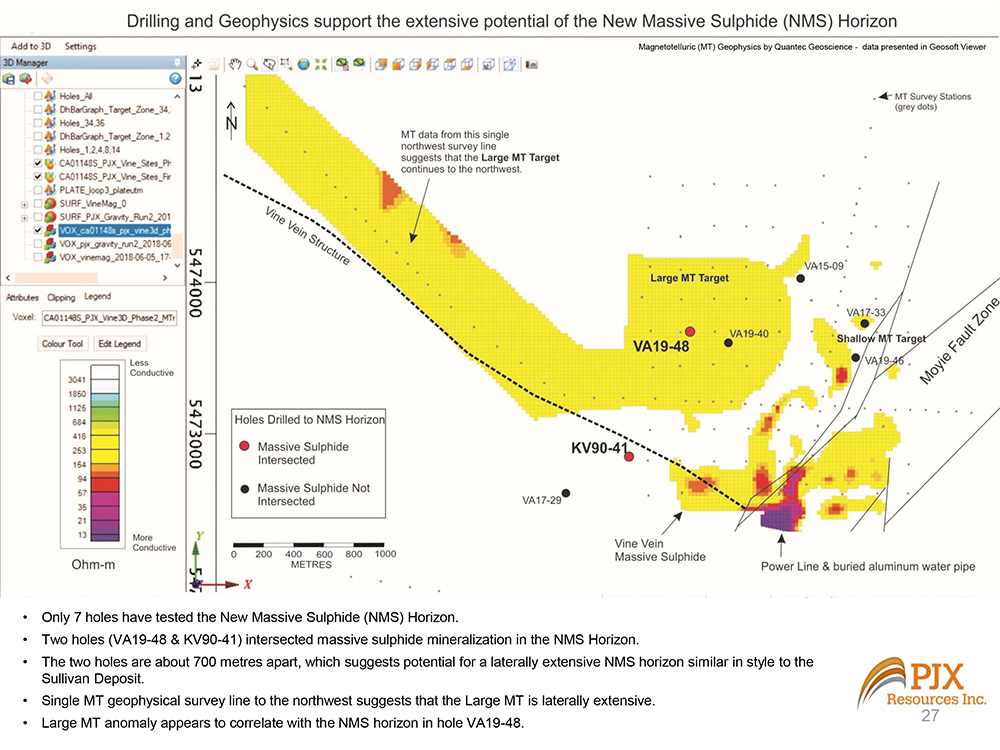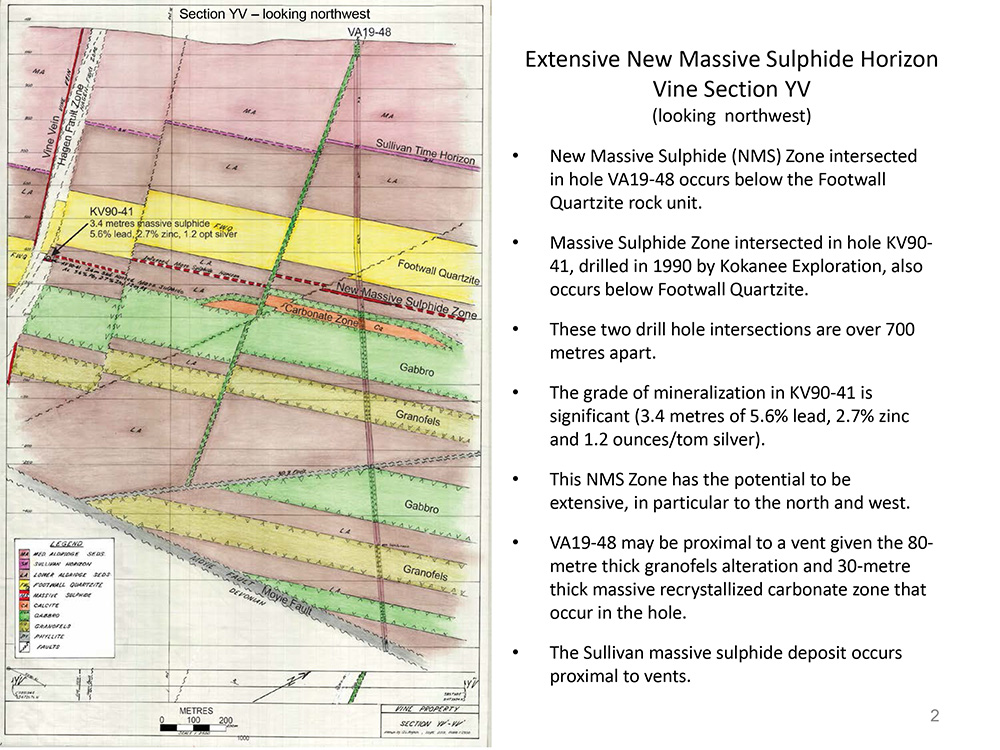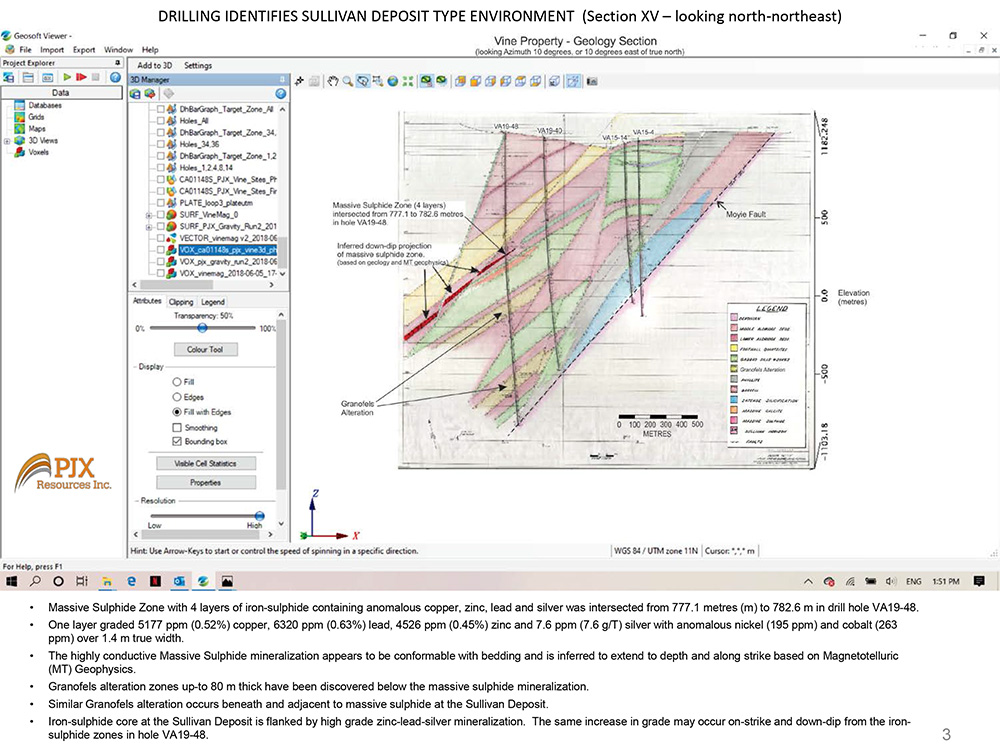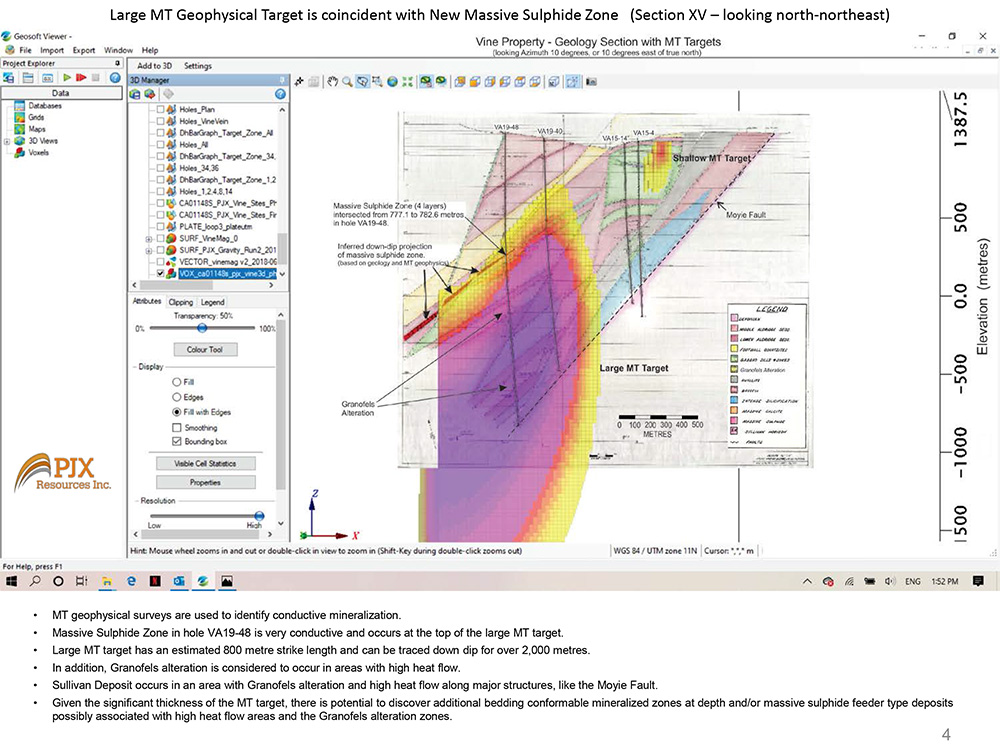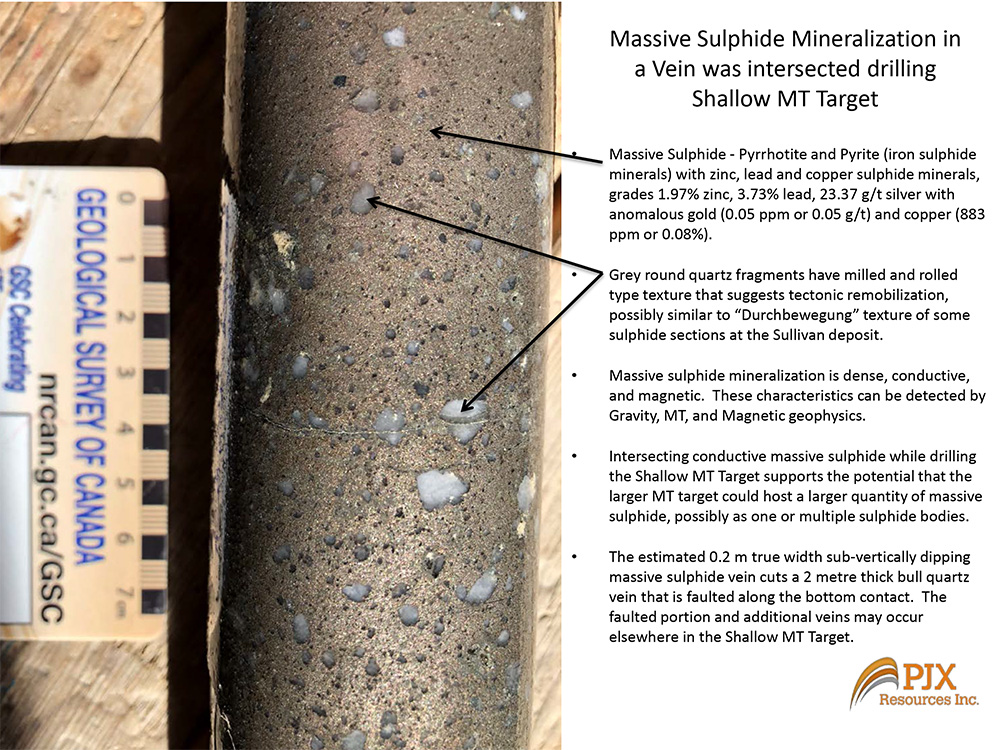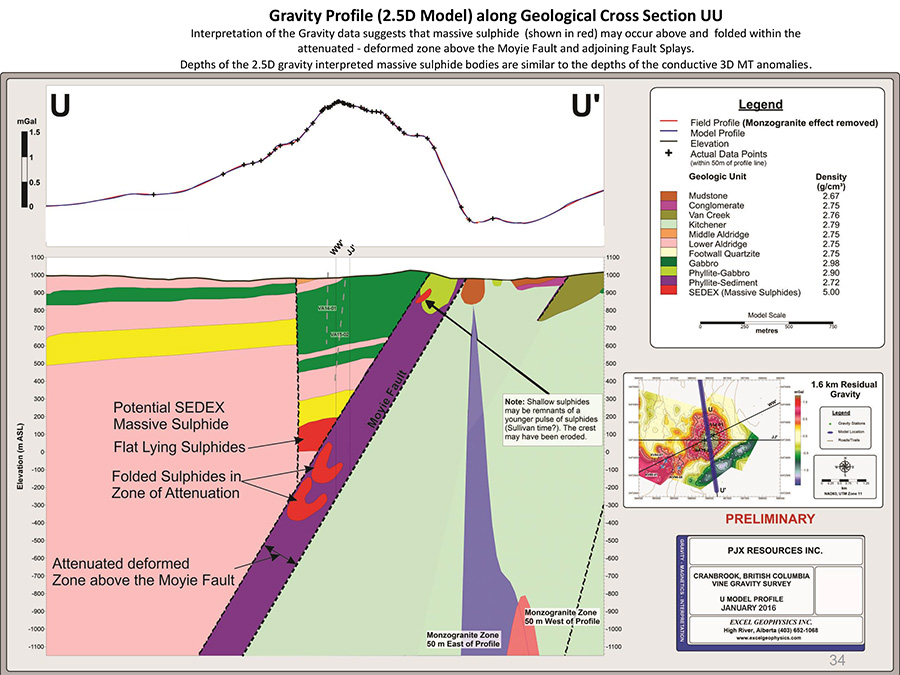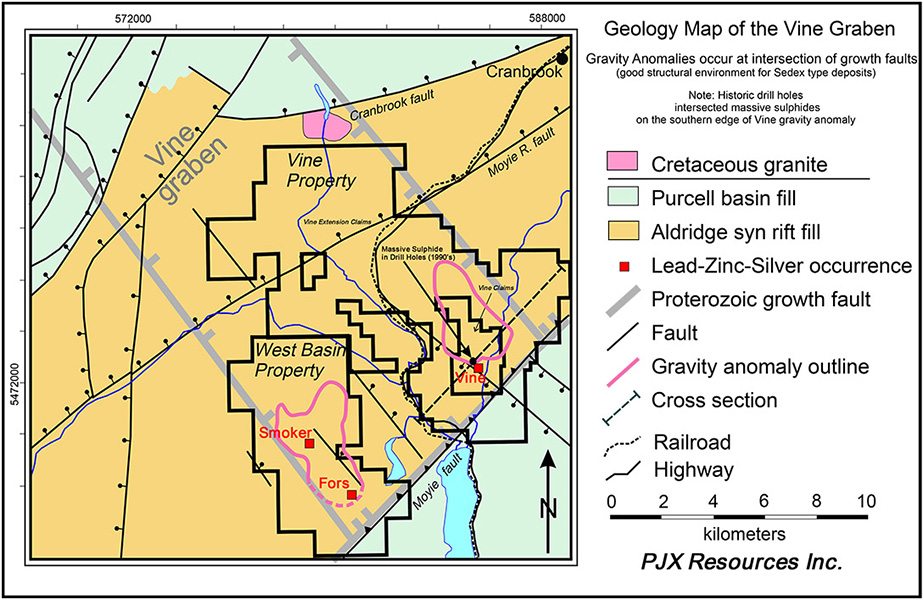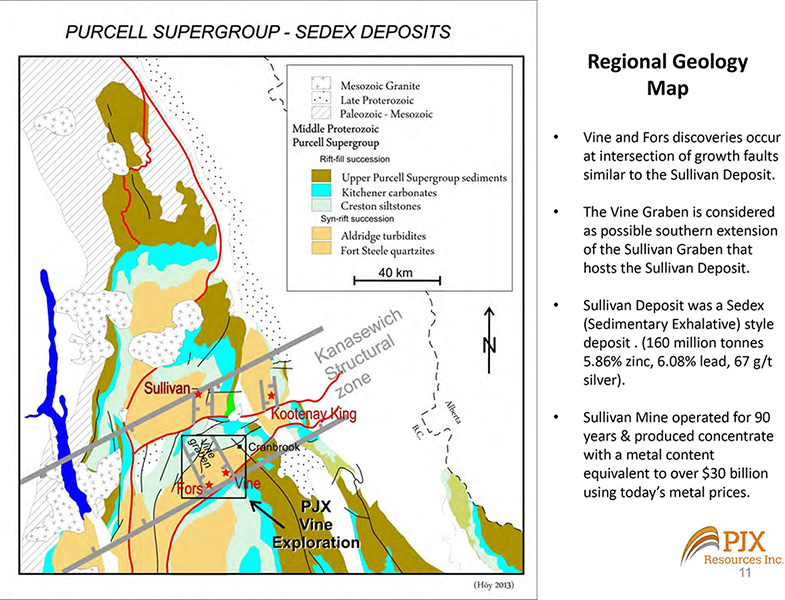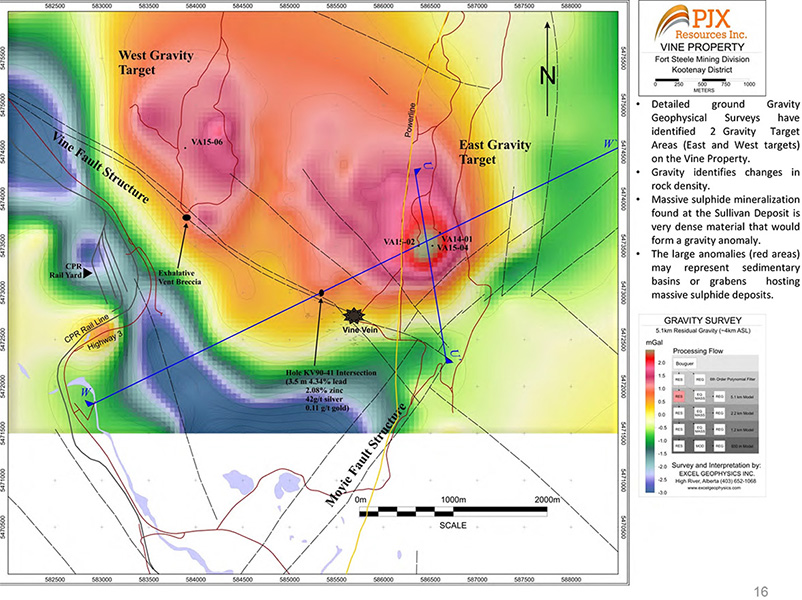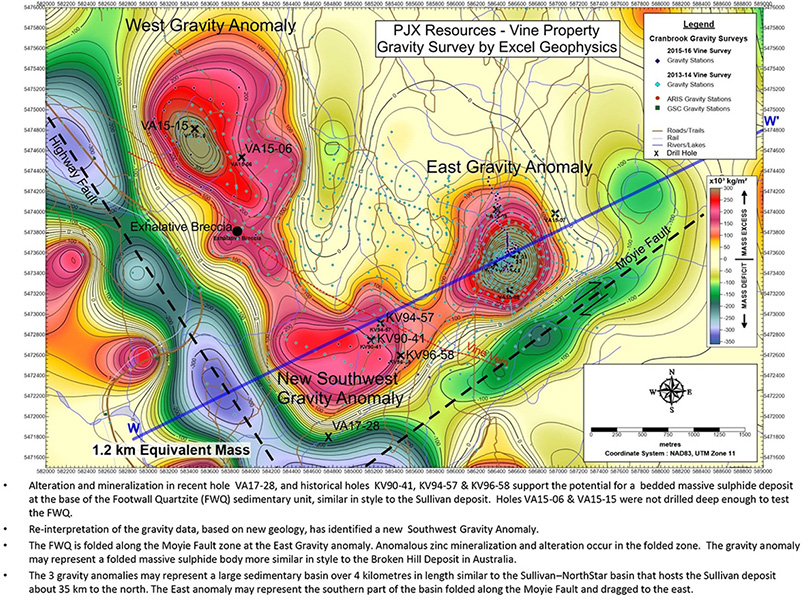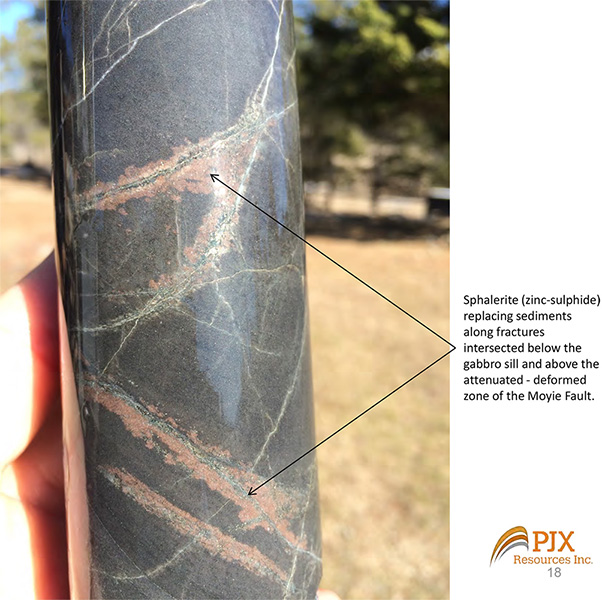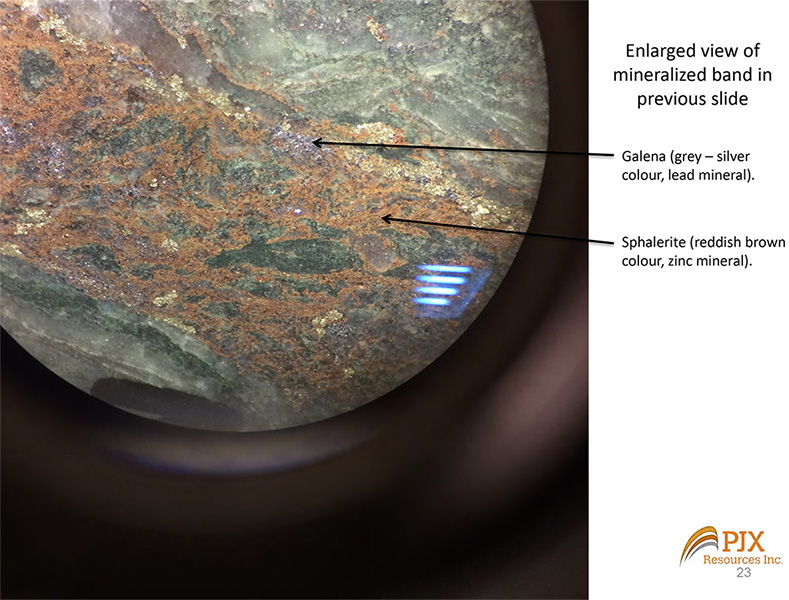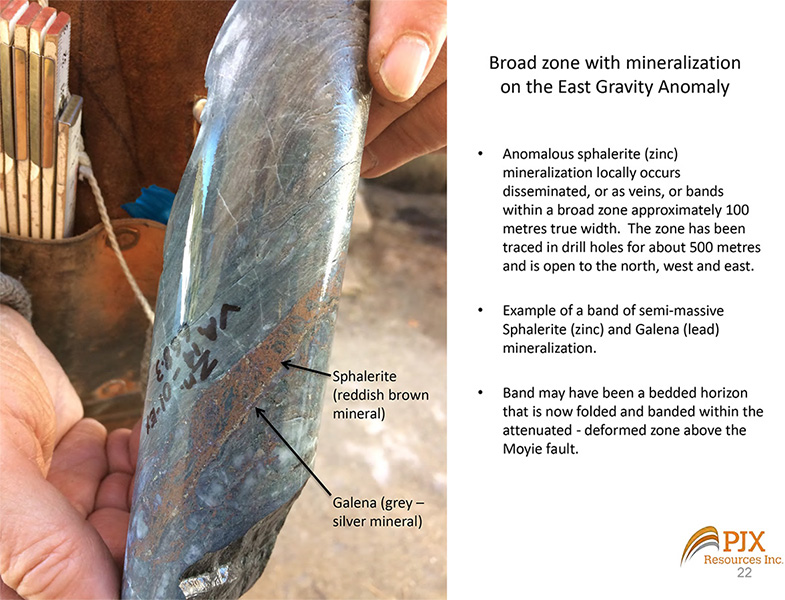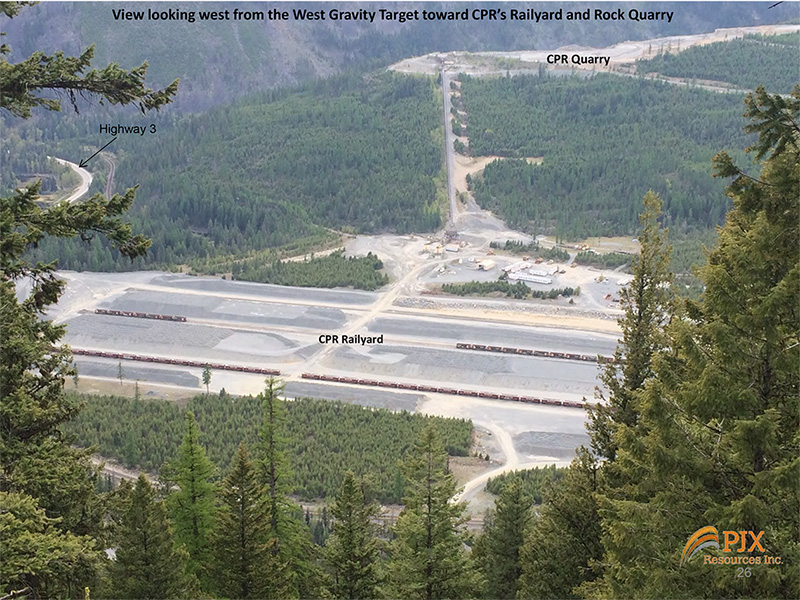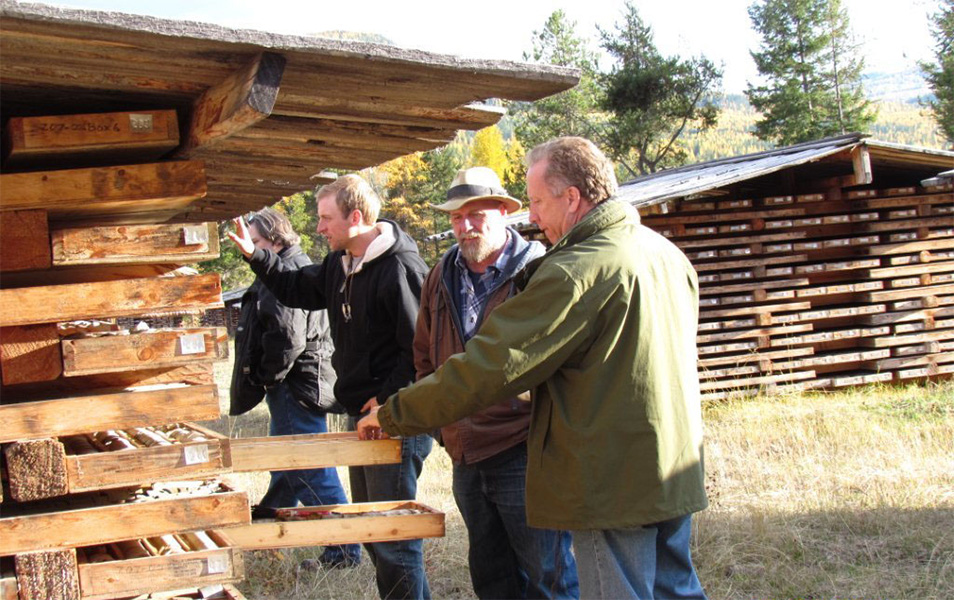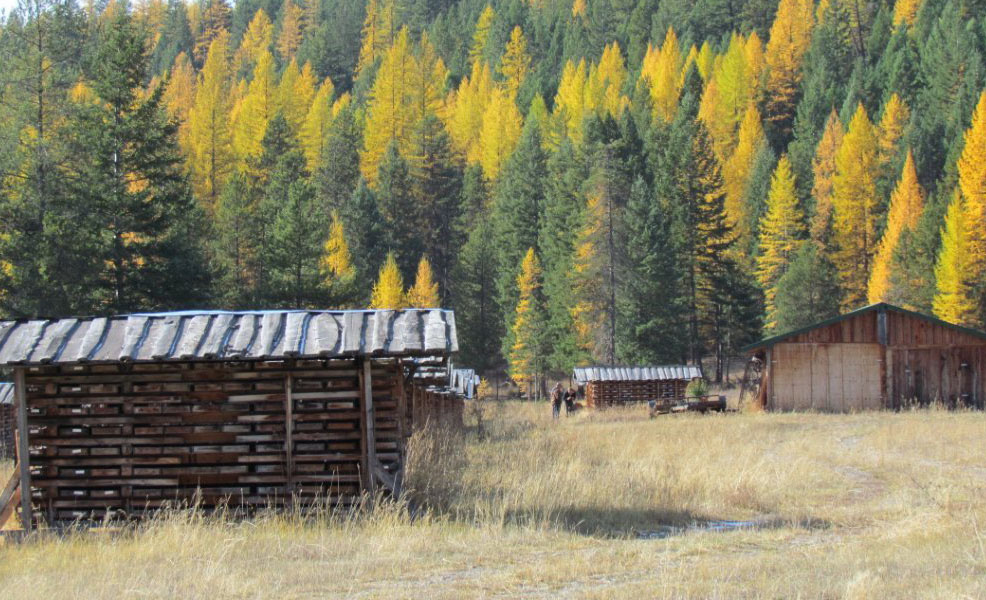Location
The road-accessible Vine Property is located 11 kilometres south of Cranbrook, British Columbia. The property is crossed by 2 power lines, CPR rail and Highway 3.
History
In the late 1970s, Cominco discovered lead, zinc and silver mineralization (Vine occurrence) in Proterozoic aged Middle Aldridge Formation argillites and quartzites on the Vine Property. In 1989, Kokanee Exploration Ltd. optioned the Vine Property from Cominco. The claims were allowed to lapse over time and Supergroup Holdings Ltd. staked the claims in 2000 and sold the Vine Property to SG Spirit Gold Inc in 2005. PJX acquired 100% interest in the Vine Property from SG Spirit Gold in October 2013 and a 100% interest in the surrounding Vine Extension Property from Klondike Gold Corp. (subject to a 1% NSR) in February 2014. The cumulative Vine Property land position is over 6,000 ha.
The Vine Vein occurrence was previously drilled by Cominco and Kokanee Exploration Ltd. The following summary of the Vine Vein occurrence is quoted from the B.C Ministry of Energy Mines, and Petroleum Resources’ Minfile Record Summary (082GSW050).
“Proven and probable reserves for the Vine property are 1,300,000 tonnes grading 2.2 grams per tonne gold, 36.3 grams per tonne silver, 3.12 per cent lead, 3.12 per cent zinc and 0.11 per cent copper (MDAP – Kokanee Exploration Ltd. Prospectus (1990)).”
Kokanee Exploration Ltd.’s resource estimate reported above for the Vine Vein is an historical estimate and was not prepared using the resources categorizations set out in NI 43-101. The Company is not aware of any more recent resource estimate for this property. The Company is uncertain as to the relevance or reliability of the historical estimate.
Exploration Potential
Data compilation and modeling of historical drilling suggest the mineralized Vine Vein structure continues to depth and along strike beyond previous drilling. However, the Vine Vein is not the focus of exploration for PJX. Based on exploration to date, PJX management believe that the Vine Vein may represent mineralization remobilized from a Sullivan Type massive sulphide body, or a massive sulphide body that has been folded and deformed along a major regional structure called the Moyie Fault Zone. This folded and deformed type of target could be more similar to a Broken Hill Type deposit in Australia.
Dr. Trygve Hoy (P.Eng), former research economic geologist with the British Columbia Department of Mines, noted in a report to PJX about the regional and local geological significance of the Vine and West Basin Properties that, “In summary, the Vine and West Basin area has potential for discovery of a significant lead-zinc-silver Sedex deposit. The area is within a highly favourable structural and metallogenic belt, has characteristics and controls that are similar to those in the Sullivan camp area, has known Proterozoic-age lead-zinc-silver mineralization, and a prominent geophysical target.” Management believes that work completed so far appears to be confirming evidence of this highly favourable structure.
Ground geophysical surveys have identified 2 large positive gravity anomalies (East and West). Management believes that the gravity target areas have potential to host Sedex massive sulphide (zinc, lead, silver) mineralization similar in style to the Sullivan deposit located 35 km to the north. Massive sulphide mineralization containing zinc, lead, silver and iron sulphides are often more dense than surrounding rocks and this density contrast can appear as a positive gravity anomaly.
Drilling on the West Gravity anomaly suggests that syn-sedimentary faulting has created restricted basins that could host a Sedex deposit at depth. Preliminary testing in one area intersected multiple narrow bands of Sedex Style bedded massive pyrrhotite (iron) and pyrite (iron) sulphide mineralization over a 10.3 metre interval. Drilling a second area, encountered anomalous disseminated sphalerite (zinc) and thin layers of bedded sphalerite and pyrrhotite mineralization in the same geological unit.
Drilling on the East Gravity target during 2017 and early 2018 has outlined a zone of anomalous sphalerite (zinc) mineralization that is at least 550 meters long and has a true thickness of up-to 100 meters. The zinc mineralization occurs within folded sediments (phyllite) that have been transported along the syn-sedimentary Moyie fault. Drilling on the East Gravity target supports Management’s interpretation that the large Eastern Gravity anomaly may reflect, in part, a Sullivan Type Deposit at depth that has been folded along a syn-sedimentary fault similar to how the Broken Hill (zinc-lead-silver) deposit was formed in Australia.
An detailed MT survey late in 2018 identified two 3-Dimensional MT targets (shallow and large deeper targets). The large MT target also has a coincident magnetic geophysical signature.
Only the second hole to test the large MT Target intersected a zone, from 777.1 – 782.6 m, with 4 massive sulphide layers consisting of iron-sulphides with anomalous zinc, copper, lead, and silver.
The 5.5 metre thick new massive sulphide zone (NMS) appears to occur at the same geological horizon as a 3.4 metre massive sulphide zone grading 5.6% lead, 2.7% zinc and 1.2 ounces/ton silver intersected in an historical hole drilled 700 metres to the south. No other holes have been drilled to test this horizon between these holes, or on strike and down dip to the north and west.
The NMS zone occurs at the top of the large MT target. According to Quantec Geoscience data, the large MT target has an 800 metre strike length and can be traced down dip for over 2,000 metres.
Thin section analysis of core samples by Vancouver Petrographics Ltd. has identified granofels alteration, beneath the NMS zone, that is considered to occur in areas with high heat flow, such as venting environments on the ocean floor; a similar alteration occurs beneath the Sullivan Deposit.
Next Steps
Massive Sulphide deposits, like the Sullivan, can be conductive and magnetic. Geophysical surveys have identified a large conductive target that is coincident with a magnetic signature within a geological setting similar to the Sullivan deposit on the Vine Property.
The core of the Sullivan massive sulphide deposit is largely composed of iron-sulphides. Mineable zinc, lead, silver and other sulphide concentrations occur around the core.
A new zone (NMS) with massive iron-sulphide mineralization intersected on the Vine Property may transition into higher concentrations of zinc, copper, lead and silver on strike and down dip, similar to what occurs at the Sullivan Deposit.
Given the significant thickness of the MT target, there may be additional mineralized zones at depth and/or possible massive sulphide feeder zones at depth that have not yet been intersected by drilling.
Plan is to use down hole geophysics and drilling to explore for greater concentrations of zinc, lead, copper and silver around the current massive-sulphide intersection.

